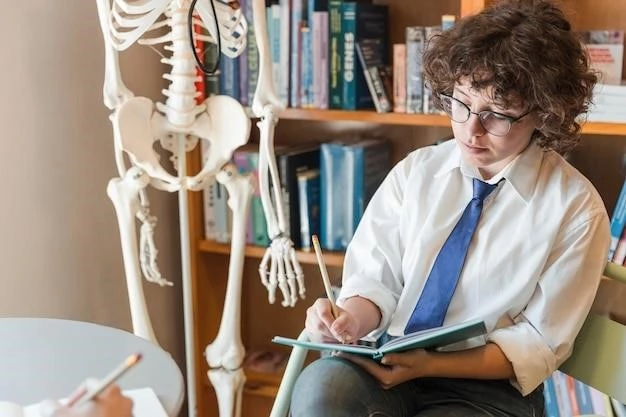Introduction to Okamuto–Satomura Syndrome
Okamuto–Satomura Syndrome, also known as AuKline Syndrome, is an extremely rare genetic condition characterized by severe intellectual disability, congenital hydronephrosis, and other developmental abnormalities. It was first identified by researchers Nobuhiko Okamoto, Fumi Matsumoto, Kenji Shimada, and Kenichi Satomura.
Definition and Overview
Okamuto–Satomura Syndrome, also known as AuKline Syndrome, is an extremely rare genetic condition with characteristics including severe intellectual disability, generalized hypotonia, stenosis of the ureteropelvic junction with hydronephrosis, congenital heart defects, and distinct facial features. The syndrome was first identified by researchers Nobuhiko Okamoto, Fumi Matsumoto, Kenji Shimada, and Kenichi Satomura. Individuals with this syndrome often experience developmental delays, congenital anomalies, and various medical complications. While the exact etiology of Okamuto–Satomura Syndrome remains unknown, ongoing research aims to deepen understanding of this complex condition.

Etiology of Okamuto–Satomura Syndrome
Okamuto–Satomura Syndrome is a rare genetic condition with an unknown exact etiology. It is considered to be an autosomal dominant disorder, although the specific gene or genes involved have not been identified. The syndrome is believed to be caused by a spontaneous or de novo mutation. Research conducted by Nobuhiko Okamoto, Fumi Matsumoto, Kenji Shimada, and Kenichi Satomura laid the foundation for understanding this syndrome, but further studies are needed to unravel the underlying genetic mechanisms responsible for the manifestation of Okamuto–Satomura Syndrome.
Okamuto–Satomura Syndrome presents with a range of clinical features including severe intellectual disability, generalized hypotonia, distinctive facial characteristics, congenital hydronephrosis, congenital heart defects, and developmental delays. These individuals may also exhibit additional anomalies affecting various systems, contributing to the complexity of this rare genetic condition.
Characteristics and Symptoms
Individuals with Okamuto–Satomura Syndrome commonly present with severe intellectual disability, distinctive facial features, generalized hypotonia, stenosis of the ureteropelvic junction leading to hydronephrosis, congenital heart defects, and developmental delays. Other associated symptoms may include skeletal abnormalities, feeding difficulties, and vision or hearing impairment. The clinical spectrum of this syndrome is complex, and affected individuals may experience a range of medical issues affecting multiple systems, making early and comprehensive medical management essential.
Diagnosis and Genetic Testing
Diagnosing Okamuto–Satomura Syndrome involves a comprehensive clinical evaluation, including physical examination, developmental assessment, and imaging studies to assess hydronephrosis and congenital heart defects. Genetic testing plays a crucial role in confirming the diagnosis, with molecular analysis aimed at identifying potential genetic mutations associated with the syndrome. Consultation with geneticists, pediatric specialists, and other healthcare professionals is essential for a multidisciplinary approach to diagnosis and management. Given the rarity of this condition, collaboration with specialized genetic testing laboratories may be necessary to detect specific genetic alterations linked to Okamuto–Satomura Syndrome.
Management and Treatment Approaches
The management of Okamuto–Satomura Syndrome focuses on addressing the specific symptoms and complications presented by each individual. A multidisciplinary approach involving pediatricians, geneticists, neurologists, urologists, and cardiologists is crucial to developing a comprehensive treatment plan tailored to the patient’s needs. Therapeutic interventions may include early intervention programs, speech therapy, physical therapy, and occupational therapy to support developmental progress. Treatment for associated features like hydronephrosis and congenital heart defects may involve surgical interventions and ongoing monitoring to optimize long-term outcomes. Genetic counseling is an integral part of management to provide families with information about the genetic implications and recurrence risks associated with the syndrome.

Prognosis and Long-Term Outlook
The prognosis for individuals with Okamuto–Satomura Syndrome varies based on the severity of symptoms and the presence of associated complications. Due to the complexity and rarity of this genetic condition, a multidisciplinary approach to care is essential to optimize outcomes and quality of life. Long-term outlook often involves ongoing medical management, including interventions to address developmental delays, intellectual disability, and related medical issues. Early diagnosis and comprehensive support services play a crucial role in enhancing the prognosis for individuals with Okamuto–Satomura Syndrome. Continued research and advancements in medical care are key to improving long-term outcomes for affected individuals and their families.
Research and Studies on Okamuto–Satomura Syndrome
Research on Okamuto–Satomura Syndrome remains limited due to its rarity, presenting challenges in data collection and study recruitment. However, efforts are ongoing to elucidate the underlying genetic mechanisms, clinical manifestations, and optimal management strategies for individuals affected by this syndrome. Early studies by Nobuhiko Okamoto, Fumi Matsumoto, Kenji Shimada, and Kenichi Satomura laid the foundation for understanding the primary features of the syndrome. Collaborative research initiatives seek to expand knowledge, enhance diagnostic capabilities, and explore potential therapeutic avenues to improve the quality of life for individuals with Okamuto–Satomura Syndrome. Unlocking further insights into the etiology and pathophysiology of this condition is crucial to advancing clinical care, genetic counseling, and support services for affected individuals and their families.
Support and Resources for Patients and Families
Individuals and families affected by Okamuto–Satomura Syndrome can benefit from a range of support services and resources aimed at enhancing their quality of life and providing emotional and practical assistance. Support groups, both online and in-person, offer a platform for individuals to connect with others facing similar challenges, share experiences, and exchange valuable information. Genetic counseling services play a crucial role in helping families understand the genetic implications of the syndrome and make informed decisions regarding family planning and healthcare management. Additionally, access to specialized medical professionals, developmental specialists, and social services can significantly contribute to comprehensive care and support for patients and their families navigating the complexities of Okamuto–Satomura Syndrome.
Awareness and Advocacy Efforts
Increasing awareness and fostering advocacy for Okamuto–Satomura Syndrome are vital in promoting understanding, support, and research for individuals and families affected by this rare genetic condition. Advocacy efforts involve raising public awareness, educating healthcare professionals, and collaborating with research institutions to drive progress in diagnosis, treatment, and genetic counseling. Participation in awareness campaigns, support initiatives, and fundraising activities can significantly impact the advancement of care and services for those living with Okamuto–Satomura Syndrome. By amplifying the voices of individuals, families, and advocacy groups, greater recognition and resources can be directed towards improving the lives of those affected by this complex syndrome.
Comparison with Other Syndromes
When considering Okamuto–Satomura Syndrome in comparison to other genetic syndromes, distinct features such as severe intellectual disability, congenital hydronephrosis, and congenital heart defects set it apart. While some syndromes may share common characteristics like developmental delays or facial anomalies, the unique combination of symptoms seen in Okamuto–Satomura Syndrome distinguishes it within the spectrum of genetic disorders. For example, Down Syndrome is characterized by an additional copy of chromosome 21 and presents specific cognitive and physical traits. In contrast, Okamuto–Satomura Syndrome showcases a different set of clinical manifestations, emphasizing the importance of accurate diagnosis and tailored management strategies for each condition.
Conclusion and Future Directions
In conclusion, Okamuto–Satomura Syndrome poses unique challenges due to its complex clinical manifestations and rarity. Despite ongoing research efforts, much remains to be discovered regarding the underlying genetic causes and optimal management strategies for this condition. The collaboration between healthcare professionals, researchers, advocacy groups, and affected individuals and families is crucial in advancing knowledge, improving diagnostic capabilities, and enhancing support services. Future directions in research should focus on unraveling the genetic basis of the syndrome, developing targeted interventions, and expanding resources for those affected. By raising awareness, fostering advocacy, and investing in research, the medical community can strive towards better outcomes and quality of life for individuals living with Okamuto–Satomura Syndrome.
